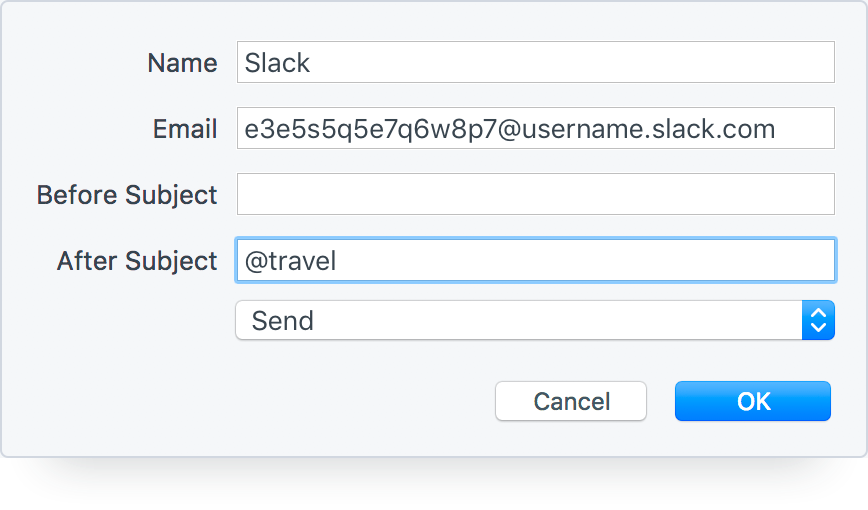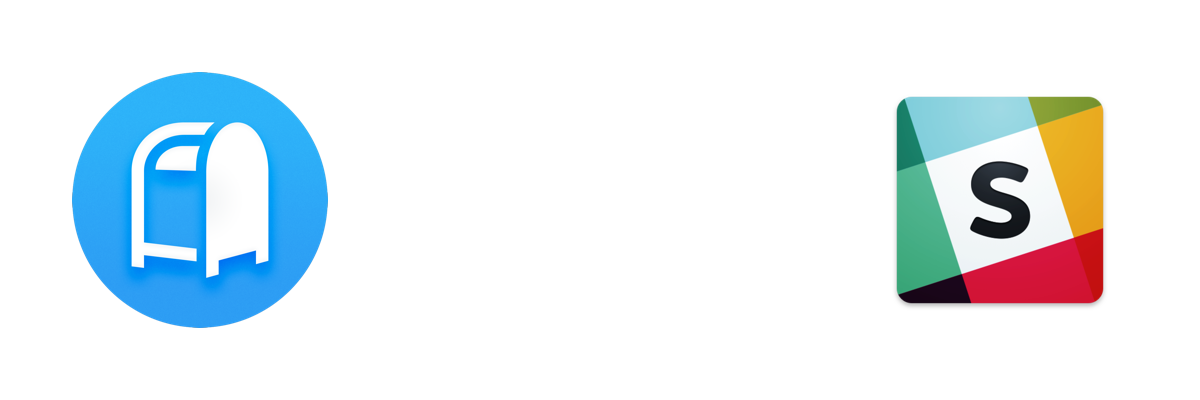Create a Slack Message from an Email
Postbox's Quick Post feature enables you to quickly set up and use send-to-service email addresses. Best of all, you can send content to the service in the background, without having to open up a compose window.
You can save emails directly into Slack using your unique Slack email address. Send customer emails and inquiries, email announcements, weekly automated reports, or anything you receive as an email, to Slack, and share them with your team.
Find your Slack email address
Your Slack email address is a unique address you can use to save emails into Slack and looks something like this: [email protected]. To find your Slack email address, within Slack click on your name in the top left of the workspace:
Preferences > Messages & Media > Get a Forwarding Address > Copy to save Slack email address to your clipboard.
You can also download the Email for Slack app. With this app, each person and channel you work with is assigned a unique email address. Note: This feature is only available with the Standard or Plus plan.
Create your Quick Post
In Postbox, navigate to Preferences or Options > Advanced > Quick Post and then click the + button to create a new Quick Post.
Create a name for the Quick Post, then enter your Slack email address.

Emails sent to Slack without the Email for Slack app are automatically sent to your Direct Messages by the user Slackbot. From there, you can share the email with a specific channel or person. In the Slack workspace, click the Share button in the upper right of the email. You can select and send the email to individual people or channels using the pulldown menu.
If you have the Email for Slack app, you can set a new Quick Post for each channel and person using their unique email address. These Quick Posts can be organized by nesting the channels and people under a parent “Slack” Quick Post.
Nesting Quick Posts
Quick Posts can be nested by including “Parent Menu::” before the Direct Post name. For example, say you have the following Slack channels and people:
- Channel 1
- Channel 2
- Person 1
When setting up the Quick Posts for each person or channel, you can then name them:
- Slack::Channel 1
- Slack::Channel 2
- Slack::Person 1
When you access your Quick Posts, those three options will then appear under the parent menu "Slack." You can select one of these options under the parent menu to send the email to a specific person or channel.
Specify how the message should be sent
Send As Attachment is usually the best way to go since you're forwarding the original email. Services can then do the right thing with regards to images as attachments, for instance.
Send should be used when the service doesn't know how to process .eml files as attachments, like Trello or Slack. However, it does have some limitations. For example, images embedded into the message body as an IMAP URL won't show in the destination.
Send via Compose Window will bring up the Compose Window, which you can then edit before sending. This option is also the best one to use for images embedded into the message body as an IMAP URL.
Automatic email filtering or forwarding
You can also set up Postbox's email filters to automatically trigger a Quick Post when you receive an email from a specific sender or with a particular subject.
For example, you can configure Postbox to quick post any emails sent from "Google Analytics' with "weekly report" in the subject line to your company's "Reports" notebook.
To set this up, go to Postbox's Tools menu > Message Filters > New, set your filter criteria, then for the action select Quick Post and then your desired Quick Post.
But note that messages are always sent As Attachment when using a filter action because, by their nature, filter actions run in the background. So be sure to select "Send as Attachment" within the editor panel for this Quick Post.

